This informative article titled “24 Common Backyard Birds in Utah” presents a comprehensive guide to the most frequently spotted bird species in Utah. Drawing data from the citizen science program eBird, this article ensures a high level of accuracy compared to other similar resources. Each of the 24 bird species is not only accompanied by captivating pictures but also provides valuable tips on attracting these birds to your own backyard. The American Robin takes the spotlight as the most commonly sighted bird in Utah, appearing on an impressive 36% of bird watching lists. In addition to the bird listings, the article offers a wealth of information on bird-watching in Utah, providing resources like eBird and local bird groups. Delving deeper, readers will find sections on bird identification, bird feeders and foods, and seasonal bird lists, capturing the diverse dimensions of the avian world.
Bird Watching in Utah
Utah is a fantastic destination for bird watchers, with its diverse habitats ranging from desert canyons to alpine meadows. Whether you are a seasoned birder or just starting out, Utah offers a wide variety of bird species to observe and appreciate. This article will provide you with a comprehensive guide to bird watching in Utah, including information on bird identification, the importance of citizen science program eBird, local bird groups and resources, bird feeders and foods, seasonal bird lists, and detailed descriptions of 24 common backyard birds in Utah.
Introduction to Bird Watching
Bird watching, also known as birding, is a hobby and recreational activity that involves observing and studying birds in their natural habitats. Not only is bird watching a great way to connect with nature and enjoy the outdoors, but it also contributes to scientific research and conservation efforts. By documenting and reporting bird sightings, bird watchers can play a crucial role in collecting valuable data about bird populations and trends.
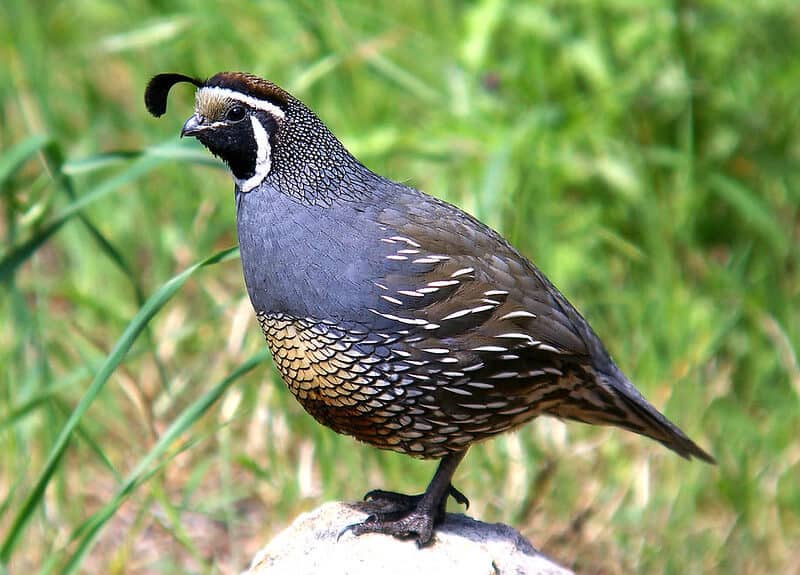
Importance of Citizen Science Program eBird
When it comes to bird watching in Utah, one invaluable resource is the citizen science program eBird. Developed by the Cornell Lab of Ornithology and the National Audubon Society, eBird allows bird watchers to keep track of their sightings and contribute to a global database of bird observations. This data is used by scientists, researchers, and conservation organizations to better understand bird populations, migration patterns, and habitat preferences.
By participating in eBird, bird watchers in Utah can not only enhance their own birding experiences but also make a meaningful impact on bird conservation and research efforts. The data collected through eBird helps identify important bird areas, monitor rare and endangered species, and assess the overall health of bird populations.
Local Bird Groups and Resources
Utah is home to several local bird groups and organizations that are dedicated to promoting bird watching, conservation, and education. These groups provide a wealth of resources and opportunities for bird watchers of all levels of expertise.
One such organization is the Utah Birders, a community of bird enthusiasts who organize regular bird walks, field trips, and educational events. The Utah Birders website (www.utahbirders.com) offers a wealth of information, including birding hotspots, species checklists, and trip reports.
The Great Salt Lake Audubon is another fantastic resource for bird watchers in Utah. This local chapter of the National Audubon Society hosts regular meetings, field trips, and birding festivals. Their website (www.greatsaltlakeaudubon.org) provides information on upcoming events, bird conservation initiatives, and educational programs.
In addition, the Utah Division of Wildlife Resources (www.wildlife.utah.gov) is a valuable source of information on bird watching regulations, birding trails, and bird species found in Utah. Their website also includes birding guides and resources for educators.
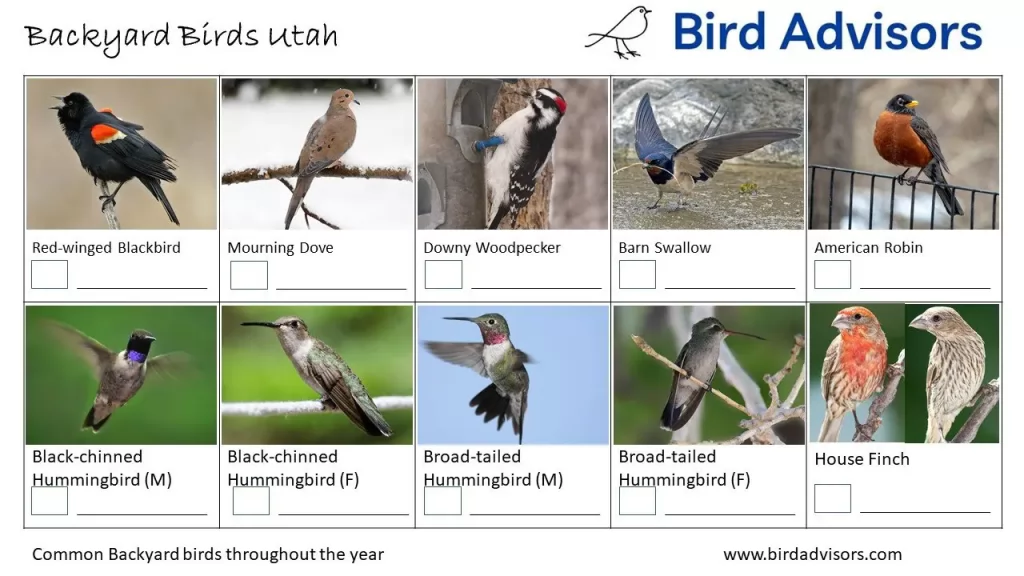
Bird Identification
One of the key skills in bird watching is the ability to identify birds based on their size, shape, and color. While some bird species may have unique and easily recognizable features, others may require a closer look or use of specialized tools.
When it comes to bird size, it is important to note that birds can vary greatly in their dimensions, ranging from tiny hummingbirds to majestic raptors. Learning to estimate the size of birds in comparison to familiar objects can help determine their species.
Birds also exhibit a variety of shapes, which can provide valuable clues for identification. Paying attention to the proportions of the body, tail, wings, and bill can help distinguish between different bird families.
Color is another important characteristic to consider when identifying birds. Not only can color indicate the species, but it can also provide information about the bird’s age, gender, and breeding cycle. Field guides and online resources can help bird watchers learn about the specific color patterns of different bird species.
In addition to visual characteristics, bird identification can be aided by the use of tools such as binoculars, spotting scopes, and field guides. Binoculars allow bird watchers to observe birds from a distance without disturbing them, while spotting scopes provide even higher magnification for viewing distant or small birds. Field guides, available in print or digital formats, provide detailed descriptions and illustrations of bird species to aid in identification.
Bird Feeders and Foods
Installing bird feeders in your backyard can provide an excellent opportunity to attract birds and observe them up close. Different types of bird feeders and foods can attract a variety of bird species, allowing bird watchers to enjoy a diverse array of feathered visitors.
When it comes to selecting bird feeders, there are several options to consider. Tube feeders are popular for attracting smaller bird species such as finches and chickadees. Platform feeders are suitable for attracting larger birds like jays and doves. Additionally, suet feeders can be used to provide high-energy food for woodpeckers and other insect-eating birds.
In terms of bird foods, there are numerous options available. Black oil sunflower seeds are a favorite among many bird species and are rich in nutrients. Nyjer seeds, also known as thistle seeds, are preferred by finches and other small seed-eating birds. Suet, a high-fat mixture, is highly attractive to woodpeckers, nuthatches, and chickadees.
To effectively attract birds to your backyard, it is important to provide a variety of food options and maintain a consistent supply. Additionally, ensuring that bird feeders are regularly cleaned and protected from squirrels and other garden pests can maximize their effectiveness.
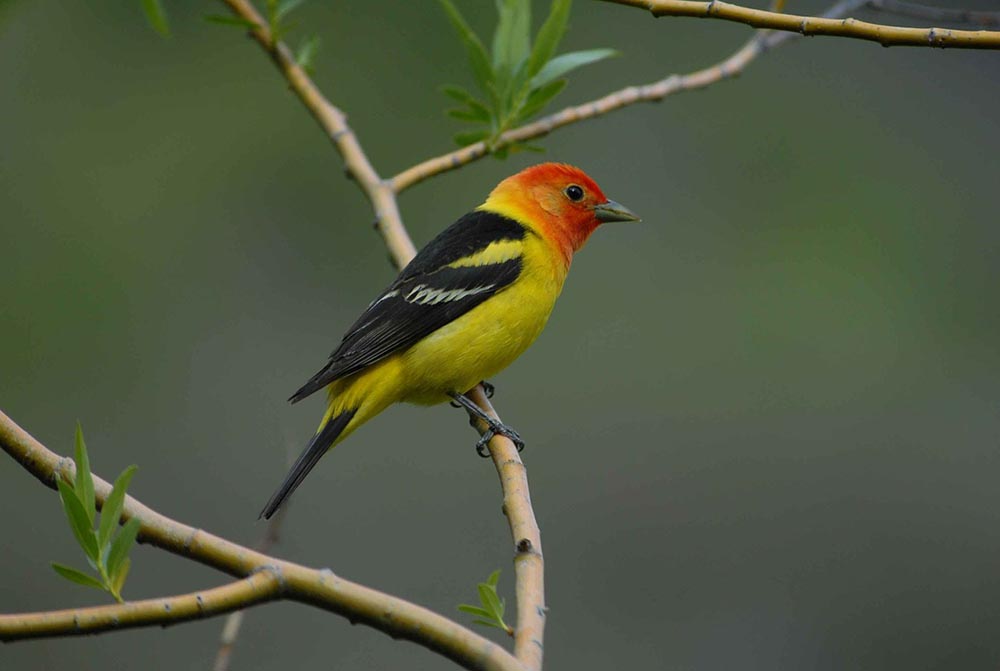
Tips for Attracting Birds to Your Backyard
In addition to providing bird feeders and food, there are several other tips and techniques that can help attract birds to your backyard.
-
Create a bird-friendly habitat: In order to attract birds, it is important to create a habitat that meets their needs. Planting native trees, shrubs, and flowers can provide food, shelter, and nesting sites for birds. Providing a water source such as a birdbath or a small pond can also attract birds, especially during dry periods.
-
Use bird-friendly landscaping techniques: Avoid using pesticides and herbicides in your yard, as they can be harmful to birds and their insect food sources. Incorporate a variety of plant species to attract a diverse array of bird species. Providing different levels of vegetation, such as tall trees, shrubs, and ground cover, can provide birds with different foraging and nesting opportunities.
-
Offer nesting materials: Birds often use natural materials such as twigs, leaves, and grasses to construct their nests. By providing materials such as string, yarn, and pet fur, you can help birds in their nest-building efforts.
-
Provide shelter: Birds need places to rest and seek protection from predators and harsh weather conditions. Installing birdhouses or nest boxes can provide birds with secure and suitable nesting sites.
By incorporating these tips and techniques, you can create a backyard oasis that will attract a wide variety of bird species, offering endless opportunities for observation and enjoyment.
Seasonal Bird Lists
Utah’s diverse habitats and changing seasons contribute to a wide variety of bird species throughout the year. By understanding the seasonal patterns of bird migration, bird watchers can anticipate which species they are likely to encounter during different times of the year.
Spring Birds in Utah
Spring is an exciting time for bird watchers in Utah, as migrating birds return from their wintering grounds and breeding activity ramps up. Some of the notable bird species to look out for during spring in Utah include:
- Western Tanager: With its vibrant yellow body and black wings, the Western Tanager is a stunning sight in the spring. Look for them in the mountains and forests of Utah.
- Yellow Warbler: This small, brightly colored songbird can be found near wetlands and riparian areas, singing its melodic song.
- Cedar Waxwing: Recognizable by its sleek brown plumage and distinctive crest, the Cedar Waxwing can often be found in flocks, feeding on berries and insects.
Summer Birds in Utah
As the temperatures rise and the landscape becomes drier, Utah’s bird species adapt to the summer conditions. Some of the bird species commonly seen during the summer months include:
- Bullock’s Oriole: With its vibrant orange and black plumage, the Bullock’s Oriole is a common summer visitor to Utah. Look for them in cottonwood groves and other riparian habitats.
- Ruby-throated Hummingbird: Known for its dazzling iridescent plumage and remarkable flight abilities, the Ruby-throated Hummingbird is a favorite summer visitor to gardens and flower-rich areas.
- Western Meadowlark: With its striking yellow breast and distinctive song, the Western Meadowlark can often be seen perched on fence posts or grassy fields.
Fall Birds in Utah
Fall is a time of transition for both resident and migrating bird species in Utah. As summer residents head south for the winter and northern species pass through on their way south, the following bird species can be spotted in Utah during the fall:
- Dark-eyed Junco: These small, ground-feeding birds have a wide range of color variations, from dark gray to pale gray, making them easily recognizable during the fall season.
- White-crowned Sparrow: With its distinct white and black crown, the White-crowned Sparrow is a fairly common visitor to Utah during the fall. Look for them in shrubby areas and open fields.
- Red-tailed Hawk: As the leaves change colors, keep an eye out for Red-tailed Hawks soaring overhead, using thermals to migrate or hunt.
Winter Birds in Utah
Winter in Utah brings colder temperatures and snow-covered landscapes, attracting a unique set of bird species. Some of the birds commonly seen in Utah during the winter months include:
- American Goldfinch: Although the males lose their bright yellow plumage in the winter, the American Goldfinch remains a common sight at bird feeders, feeding on seeds and thistle.
- Dark-eyed Junco: These winter visitors are often referred to as “snowbirds,” as their arrival coincides with the first snowfall. Look for their dark gray plumage with flashes of white.
- Northern Pygmy Owl: This small owl species is well adapted to the winter conditions and can often be seen perched on tree branches, waiting to ambush its prey.
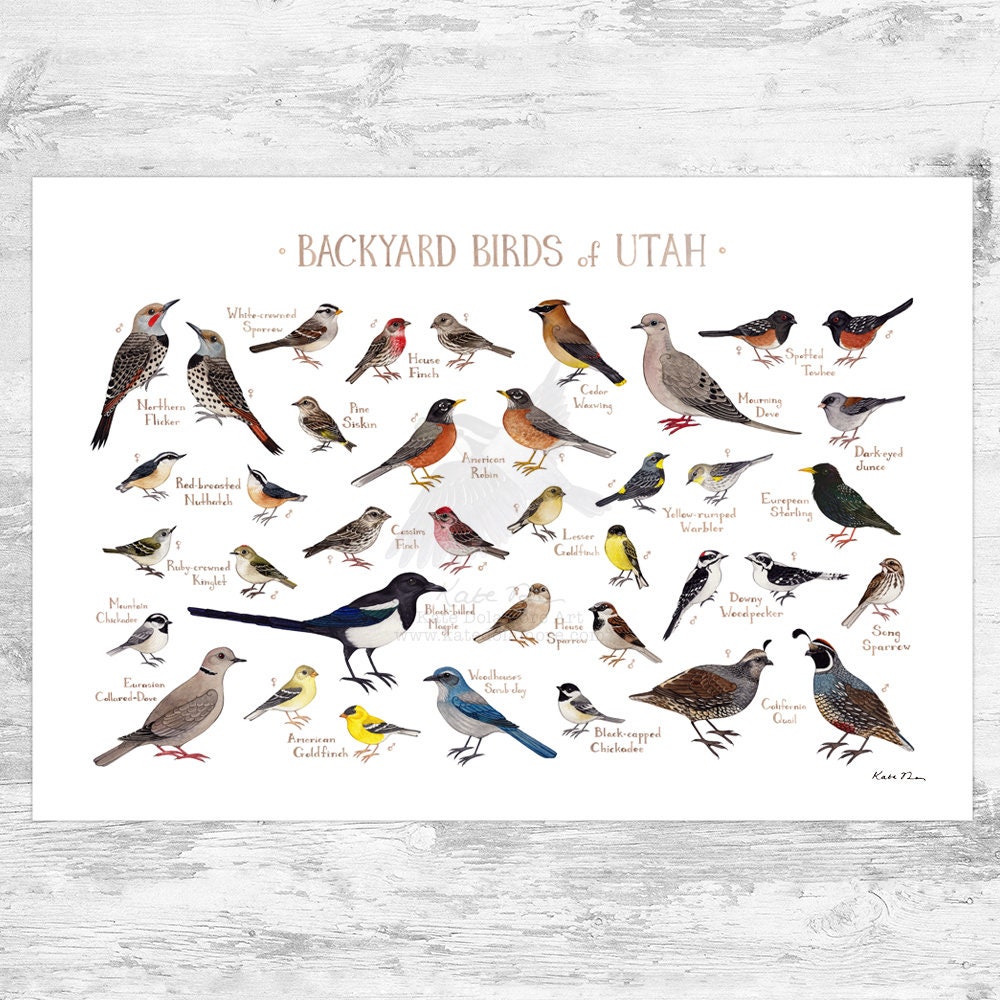
24 Common Backyard Birds in Utah
Utah is home to a diverse array of bird species, and many of them can be observed in backyards across the state. Here are 24 common backyard birds in Utah that you can expect to see throughout the year:
American Robin
The American Robin is the most commonly seen bird in Utah, reported on 36% of bird watching lists. These medium-sized birds have a distinctive red breast and a melodious song. They are frequently observed foraging for earthworms and insects on lawns and in gardens.
Black-capped Chickadee
The Black-capped Chickadee is a small songbird known for its distinctive black cap and white cheeks. These birds are highly active, flitting from tree to tree in search of insects, seeds, and berries. They are known for their cheerful “chick-a-dee-dee-dee” song.
House Finch
The House Finch is a small, colorful bird with a red or orange crown and breast. They are often found at bird feeders, feeding on seeds. Their melodious song can be heard in both urban and rural habitats.
Dark-eyed Junco
The Dark-eyed Junco is a small sparrow known for its dark gray plumage and white outer tail feathers. They can be found hopping on the ground, foraging for seeds and insects. During the winter months, Dark-eyed Juncos are abundant in Utah.
Northern Flicker
The Northern Flicker is a medium-sized woodpecker with a distinctive black crescent on its chest and a white rump patch that is visible during flight. They are often observed on the ground, searching for ants and beetles in lawns and meadows.
Downy Woodpecker
The Downy Woodpecker is the smallest woodpecker species found in Utah. They have a black and white plumage with a small, chisel-like bill. Look for them drumming on trees or feeding on insects and seeds.
Mourning Dove
The Mourning Dove is a graceful bird with a soft, mournful cooing call. They have a light brown coloration with a long, tapered tail. Mourning Doves can often be seen perched on wires or feeding on the ground.
Ruby-throated Hummingbird
The Ruby-throated Hummingbird is a tiny bird with a brilliant iridescent green coloration. Males have a vibrant red throat patch, while females have a white throat. They are attracted to nectar-rich flowers and are frequent visitors to backyard feeders.
Bullock’s Oriole
Bullock’s Orioles are medium-sized birds with vibrant orange and black plumage. They are often found in cottonwood groves and other riparian habitats. Look for their intricate hanging nests and listen for their melodious songs.
White-crowned Sparrow
The White-crowned Sparrow is a medium-sized bird with distinctive white and black crown stripes. They can be found in shrubby areas and open fields, foraging for seeds and insects.
Yellow Warbler
The Yellow Warbler is a small, brightly colored songbird with a yellow body and red streaks on its breast. They are commonly found near wetlands and riparian areas, singing their sweet, melodic songs.
Blue Jay
Blue Jays are large, brightly colored birds with striking blue plumage and a distinct crest on their heads. They are known for their raucous calls and are often found in woodlands and suburban areas.
Red-tailed Hawk
The Red-tailed Hawk is a large raptor with broad wings and a reddish-brown tail. They can often be seen perched on tree branches or soaring high in the sky, searching for prey.
Western Tanager
The Western Tanager is a stunning songbird with a vibrant yellow body and contrasting black wings. They are commonly found in the mountains and forests of Utah, foraging for insects and fruit.
Black-billed Magpie
The Black-billed Magpie is a large, intelligent bird with black and white plumage and a long, graduated tail. They are highly vocal and can often be seen foraging for food or building intricate nests.
American Goldfinch
The American Goldfinch is a small songbird with bright yellow plumage during the breeding season. They are frequently observed at bird feeders, feeding on sunflower seeds and thistle.
Red-winged Blackbird
The Red-winged Blackbird is a medium-sized blackbird with bright red shoulder patches on the males. They are commonly found near wetlands and marshes, nesting in cattails and other vegetation.
Common Raven
The Common Raven is a large, intelligent bird with a glossy black plumage and a deep, croaking call. They are highly adaptable and can be found in a wide variety of habitats, from deserts to mountainous regions.
White-breasted Nuthatch
The White-breasted Nuthatch is a small songbird known for its ability to climb headfirst down tree trunks. They have a blue-gray back, white underparts, and a distinctive black cap. Look for them in woodlands and forested areas.
Song Sparrow
The Song Sparrow is a small bird with a streaked brown back and a melodic song. They are commonly found in grassy fields and shrubby areas, foraging for seeds and insects.
Cedar Waxwing
Cedar Waxwings are sleek, medium-sized birds with a brown plumage, a black mask, and a distinctive crest. They often travel in flocks and can be seen feeding on berries and insects.
Mountain Bluebird
The Mountain Bluebird is a small thrush with a striking turquoise blue plumage and a pale breast. They are commonly found in open grasslands and mountain meadows.
Pine Siskin
The Pine Siskin is a small finch with a streaked brown plumage and yellow wing bars. They are often observed feeding on the seeds of pine cones and other coniferous trees.
Northern Pygmy Owl
The Northern Pygmy Owl is a small owl species with a rounded head and a short tail. They are highly adapted to the winter conditions and can often be seen perched on tree branches, waiting to ambush their prey.
American Robin
The American Robin is a familiar and beloved bird species in Utah, known for its bright orange-red breast and its habit of hopping along lawns and gardens. These medium-sized birds are frequently observed foraging for earthworms and insects, especially during wet weather. Male robins can often be heard singing their melodious songs from the treetops.
Robins are adaptable birds that can be found throughout the year in Utah. They are commonly seen nesting on tree branches or building their cup-shaped nests in shrubs, often near human habitation. American Robins are also known to migrate, with some individuals traveling south during the winter months.
To attract American Robins to your backyard, provide a suitable habitat that includes trees, shrubs, and a source of water. Robins are primarily insectivorous but also consume a variety of fruits and berries. Planting fruit-bearing trees and shrubs such as mountain ash, hawthorn, and serviceberry can help attract robins to your yard. Additionally, providing a shallow birdbath or a small pond can attract robins, as they enjoy bathing and drinking water.
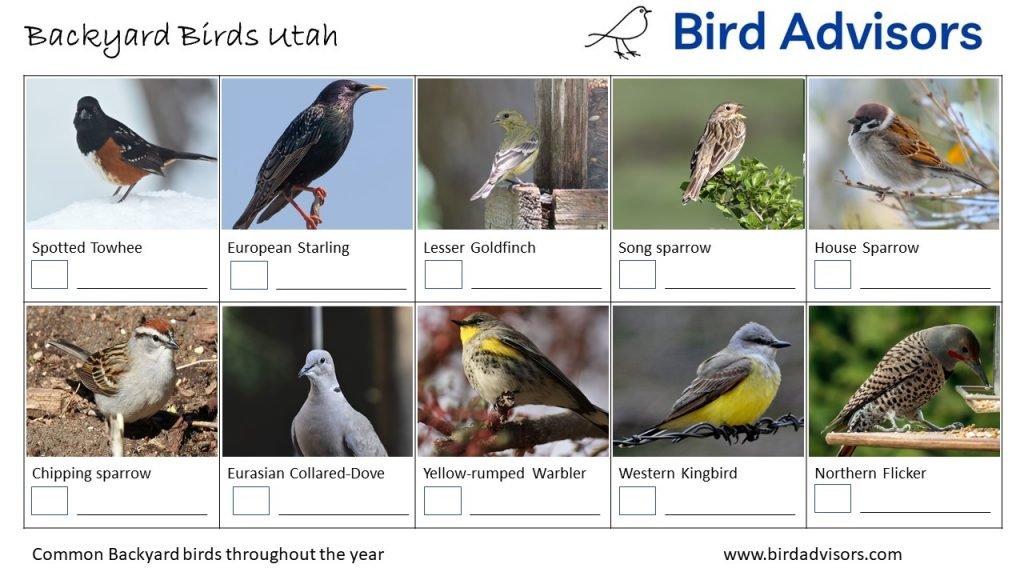
Black-capped Chickadee
The Black-capped Chickadee is a delightful backyard visitor known for its charming appearance and cheerful song. These small, active birds have a striking black cap on their heads, which contrasts with their white cheeks and gray back. They have a relatively short bill, ideal for extracting insects from crevices and feeding on seeds.
Black-capped Chickadees are year-round residents in Utah, making them a common sight at backyard feeders. They are highly social birds and often travel in small flocks, chirping and foraging together. Chickadees are frequent visitors to bird feeders, where they eagerly consume sunflower seeds, peanuts, and suet. They are also known for their curiosity and may even eat from your hand if you offer them food.
To attract Black-capped Chickadees to your backyard, provide an array of food options such as seeds, suet, and peanut butter. Installing multiple feeders at different heights and in different locations can accommodate the needs of these agile birds. Additionally, planting native trees and shrubs, such as conifers and berry-bearing plants, can provide habitat and food sources for chickadees.
House Finch
The House Finch is a charming bird species that has managed to thrive in suburban and urban environments across Utah. These small birds have a relatively stout body, with males sporting a red or orange crown and breast, while females have a more subdued coloration. House Finches are known for their delightful songs, which can be heard all year round.
House Finches are social birds that often gather in flocks, foraging for seeds and grains on the ground and in shrubs. They are highly adaptable and can be found in a variety of habitats, including residential areas, parks, and woodlands. In urban environments, House Finches are commonly seen visiting backyard feeders, where they eagerly consume sunflower seeds, millet, and other grains.
To attract House Finches to your backyard, offer a variety of seeds and grains in feeders with perches. Black oil sunflower seeds are particularly favored by House Finches. Additionally, providing a water source such as a birdbath or a small pond can make your yard even more appealing to these delightful birds.
Dark-eyed Junco
The Dark-eyed Junco, affectionately known as the “snowbird,” is a small sparrow that visits Utah during the winter months. These birds have a distinct dark gray plumage with hints of white on their outer tail feathers, making them easily recognizable. Dark-eyed Juncos are ground-feeding birds and can often be seen hopping on the ground in search of seeds and insects.
Utah provides an important wintering habitat for Dark-eyed Juncos due to its varied environments, from lower elevation valleys to mountainous regions. These birds are adaptable and can be found in a variety of habitats, including backyards, parks, and shrubby areas. Their arrival is often associated with the first snowfall, hence their affectionate nickname “snowbird.”
To attract Dark-eyed Juncos to your backyard, provide a variety of seeds such as millet, cracked corn, and nyjer. Scatter the seeds on the ground or use a low tray feeder to accommodate their ground-feeding behavior. Dense shrubs and evergreen trees can also provide suitable cover and shelter for these small birds.
Northern Flicker
The Northern Flicker is a captivating woodpecker species that can be found in Utah year-round. These medium-sized birds have a distinctive combination of brown and black plumage, with a bold black crescent on their chest and a white rump patch that is visible during flight. Male flickers also have a red or black “mustache” mark on the side of their face.
Northern Flickers can be observed in a variety of habitats, including woodlands, suburban areas, and open fields. They are versatile feeders, using their long, barbed tongues to extract ants and beetles from trees and the ground. Flickers are also fond of fruits and berries, and can often be seen feeding on these food sources.
To attract Northern Flickers to your backyard, provide a suitable habitat with mature trees and dead trees or snags, as they use these for nesting cavities. Installing a suet feeder can also attract flickers, as they are particularly fond of this high-energy food. Additionally, avoid using pesticides in your yard, as flickers rely on insects for their diet and may be harmed by toxic chemicals.
By following these tips and techniques, you can enhance your bird watching experiences in Utah and create a bird-friendly habitat in your own backyard. Whether you are observing the American Robin, the Black-capped Chickadee, or any of the other beautiful bird species in Utah, remember to enjoy their presence and contribute to citizen science efforts by reporting your sightings to eBird. Happy bird watching!
Leave a Reply